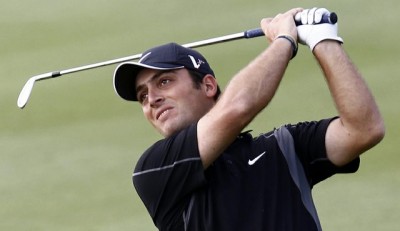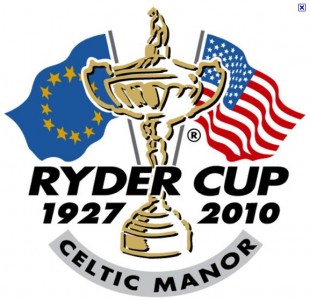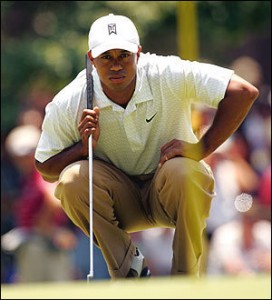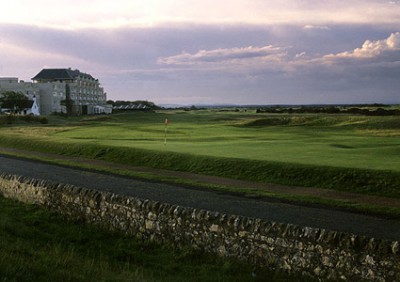 In contrast to widespread belief, driving distances in golf have not materially changed over the last 10 years. Additionally and also not in line with what many people tend to believe, there is not much of a difference between the European and US PGA tour as far as driving distance is concerned. Last but not least the number of players hitting it on average over the 300 yards has actually declined since 2006!
In contrast to widespread belief, driving distances in golf have not materially changed over the last 10 years. Additionally and also not in line with what many people tend to believe, there is not much of a difference between the European and US PGA tour as far as driving distance is concerned. Last but not least the number of players hitting it on average over the 300 yards has actually declined since 2006!
Average driving distances have not materially changed over the last 10 years. Too often complaints can be heard on the enormous distances that golf professionals drive their golf balls off the tee. This would make their second shot easier and hence make the game less attractive. As a result some courses have lengthened some of their holes. But is it really true? Are the professionals hitting balls any further? We have analyzed the progression in driving distances over the last 10 years and the conclusion is that average distances have not materially changed. In fact since their peak, they have slightly come down. So in contrast to the nineties, which were characterized by a sharp increase in driving distance, this has not been the case so far in the new millennium. The table below shows the progression in driving distances on the European and PGA tour. It is noticeable that since the peak in 2006, average driving distances have even marginally come down.
| Yards | 2000 | 2001 | 2002 | 2003 | 2004 | 2005 |
| European tour | 273,3 | 280,8 | 281,8 | 286,3 | 286,9 | 284,9 |
| US PGA tour | 273,2 | 279,3 | 279,8 | 286,3 | 287,2 | 288,9 |
| Yards | 2006 | 2007 | 2008 | 2009 | 2010 | 2011 |
| European tour | 284,1 | 282,2 | 284,3 | 285,9 | 285,6 | 286,1 |
| US PGA tour | 289,3 | 289,1 | 287,7 | 288,3 | 287,5 | 286,3 |
No big difference in yardage between Europe and the US. From the table it also becomes clear that distances in Europe and the US are not that different. For some reason there is the misconception that Americans are hitting it further. The table tells the story; the differences between the official European Tour and the US PGA are actually negligible. How about the number of golfers hitting balls further than 300 yards on a structural basis? Since 2004 there have been on average a higher number of Americans surpassing this mark. However the European have made up the gap over the last few years. For both it is noticeable that the number of longhitters has come down since 2005.
| Players >300 yds | 2000 | 2001 | 2002 | 2003 | 2004 | 2005 |
| Europe | 0 | 2 | 4 | 16 | 15 | 12 |
| US PGA | 1 | 1 | 1 | 9 | 15 | 26 |
| Players >300 yds | 2000 | 2001 | 2002 | 2003 | 2004 | 2005 |
| Europe | 12 | 4 | 9 | 8 | 10 | 9 |
| US PGA | 20 | 18 | 13 | 13 | 12 | 7 |
Lets end with some fun! Who are the notorious long- and shorthitters on the different tours? To begin with the difference in distance between the longest and shortest hitter can be substantial and has averaged around the 50 yards during the last 10 years and that is substantial; the difference between a wedge and a mid-iron. So who wins the category of the shortest hitter on tour? In the US the award goes to Corey Pavin, who dominated this category for many years in a row. His role now seems to be taken over by Brian Gay. Pavin did not hit the ball much further than 260 yards or around 234 meters, so there is hope for all of you out there! In Europe it is the Frenchman Christian Cevear showing remarkable consistency in ending at the bottom as far as yardage is concerned. Well then, the big hitters! They are the ones getting all the publicity and it should be of no surprise that Alvaro Quiros is the man as of lately. Before his reign it was Angel Cabrera together with less familiar names such as Emanuele Canonica and Titch Moore who dominated the rankings. The latter is record holder; he managed to hit 316.7 yards on average in 2005. In the US the Daly era is long gone. The household names here are JB Holmes, Robert Garrigus, Bubba Watson and Dustin Johnson but surprisingly enough none of them holds the record! That is held by Hank Kuehne, who managed to hit an average of 321.4 yards in 2003.


 Over the last few days most of Tiger Woods’ sponsors have published press releases on their future relationship with him. Gillette and Accenture have dropped him, whilst Tag Heuer and Nike continue their support for the time being. Critics have been quick to criticize particularly Gillette and Accenture claiming that Tiger’s private matters should have nothing to do with his performance levels on the golf course. Who are we to morally disqualify him (or anybody else). True but not relevant! They are missing the point. These companies have always supported Tiger, as his values seemed to match with the values of their own. As this seems no longer the case, their decision is logical.
Over the last few days most of Tiger Woods’ sponsors have published press releases on their future relationship with him. Gillette and Accenture have dropped him, whilst Tag Heuer and Nike continue their support for the time being. Critics have been quick to criticize particularly Gillette and Accenture claiming that Tiger’s private matters should have nothing to do with his performance levels on the golf course. Who are we to morally disqualify him (or anybody else). True but not relevant! They are missing the point. These companies have always supported Tiger, as his values seemed to match with the values of their own. As this seems no longer the case, their decision is logical. One of golf’s most famous and celebrated holes in the world, the 17th St Andrews hole, the Road Hole, will be lengthened by 35 yards, to 490 yards. Work will begin this week and a new tee will be built on a driving range nearby.
One of golf’s most famous and celebrated holes in the world, the 17th St Andrews hole, the Road Hole, will be lengthened by 35 yards, to 490 yards. Work will begin this week and a new tee will be built on a driving range nearby.